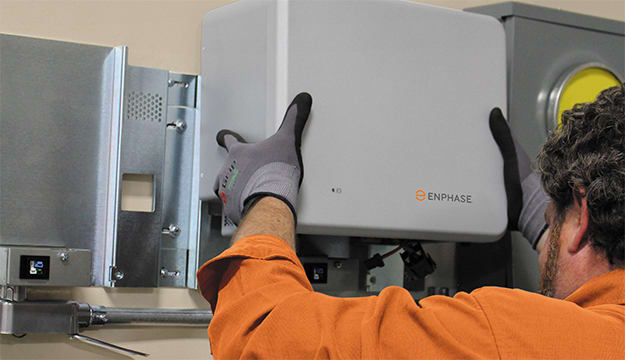What Solar Batteries Are Available In 2023?


So, how do you choose which is right for you?
Well, at Solaray, we have been installing solar storage batteries for longer than almost any other company out there, so we have learnt a lot about what works, what doesn’t, and what may happen in a few years’ time.
Firstly, today we only install solar batteries where the battery manufacturer supplies the entire product. This means the battery system includes everything needed for it to work – the battery, the inverter, the meter, and the software.
Many batteries on the market need another company’s inverter and software to run – which can create all sorts of problems.
The reason is this: battery storage & energy management are technically really complicated (just think about the smarts needed to learn and predict your energy usage, let alone how to manage the chemistry of the battery), and the last thing you can afford is to have the two products trying to do two different things. In the past, we installed many of these types of systems (that was all that was available back then), and unfortunately, we had to problems – enough to scare us off until their technology is significantly better.
Secondly, we only choose products where the software is really, really smart.
This narrows it down a lot. There’s Tesla, and Enphase.
All battery storage systems charge and discharge regularly, but the solar and storage are the heart of your future energy management, so we want to make sure the software that controls it all is able to be smart enough to learn how you live, as well as to adapt as your needs change in the future.
Thirdly, (and this is pretty obvious but important), we choose and recommend products that have great technical specifications. There are a lot of good quality batteries that have second-rate technical specifications, which means they may have a large storage capacity, but it can only be released slowly, so it is not of much use.
Lastly, of course, is how much it costs. This is viewed in two ways – the total cost to install as well as how much per kWh.
So, which products do we recommend?
Well, taking all the above into account, there are two clear leaders available in Australia – the Tesla Powerwall 2 and the Enphase IQ Battery.
Now, that’s not to say there aren’t other good batteries out there; some have great specs but are hugely expensive, others are cheaper but are not as good technically, and so on. And, as we said above, we don’t recommend or install batteries where the inverter is from another company (the jargon for this is DC Coupled).
The Tesla Powerwall and the Enphase IQ Battery are very different – and are designed for different types of customers.
The Tesla Powerwall is 13.5kWh which is about what most households would want to store and use on a daily basis. For larger households, you can install 2 or more Powerwalls if your energy consumption justifies it.
The Enphase IQ Battery starts at 5kWh of capacity, so this will suit many more households who can’t justify the size of the Tesla Powerwall. We can install from 1 to 4 Enphase batteries on a single residence, with 20kWh being the maximum system size.
The Enphase battery is compatible with S-series and IQ7 series micro-inverters, so the Enphase Battery will be the best option for people looking for a battery that is fully compatible with an existing Enphase system.
Tesla Powerwall


Tesla Powerwall has a capacity of 13.5kWh which is enough for many households to run almost entirely on solar power.
Tesla Powerwall is a beautifully functional storage solution that inherits Tesla’s proven automotive battery technology to power your home safely and economically. Completely automated, it requires little to no maintenance and is specifically designed for residential and small commercial installations.
More Information About Tesla Powerwall
Price Guide: $14,000 to $16,000 fully installed including the Tesla Energy Management App.



















